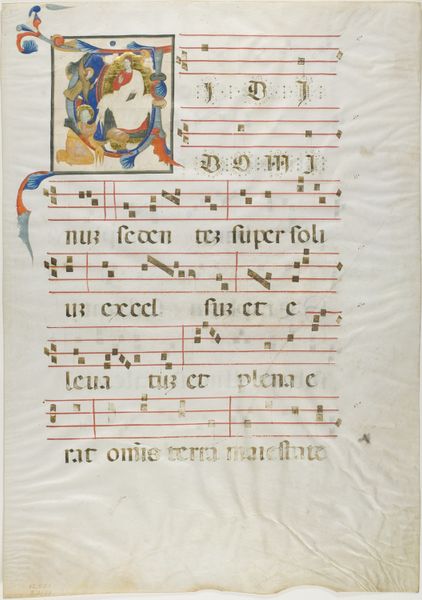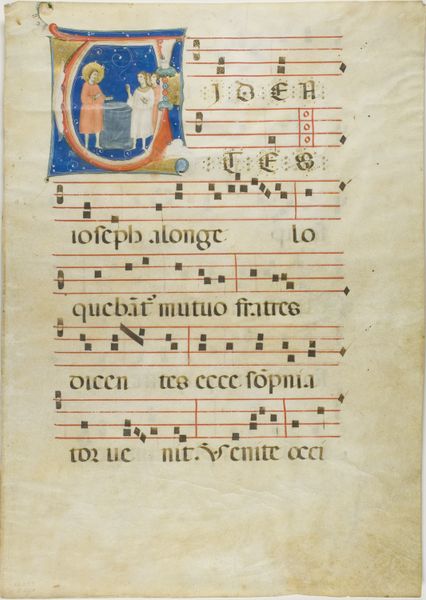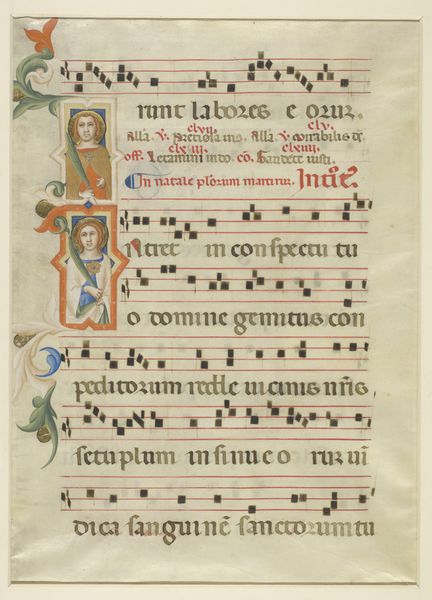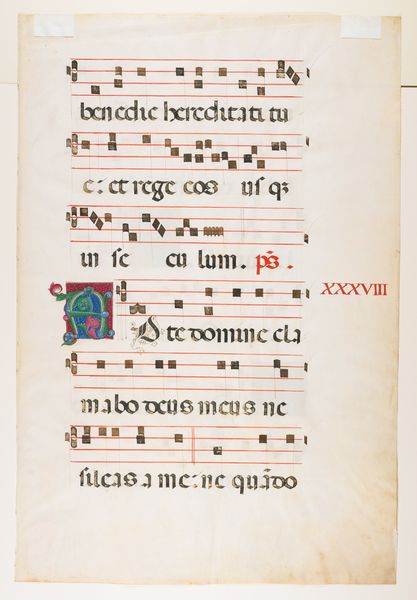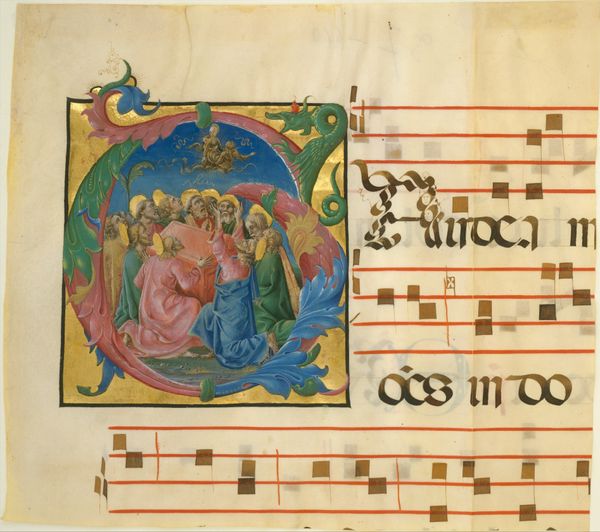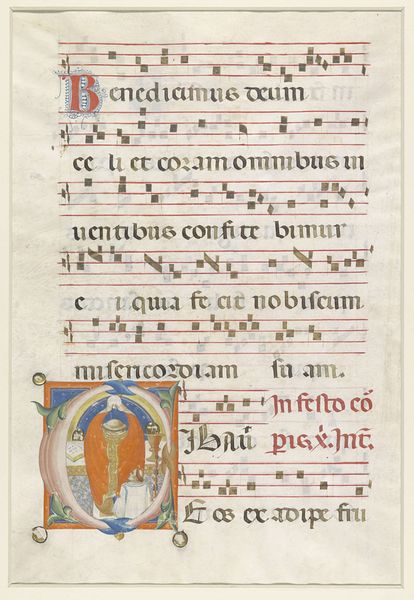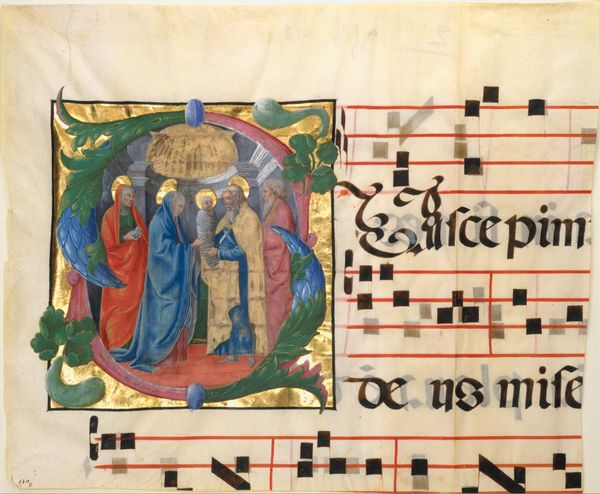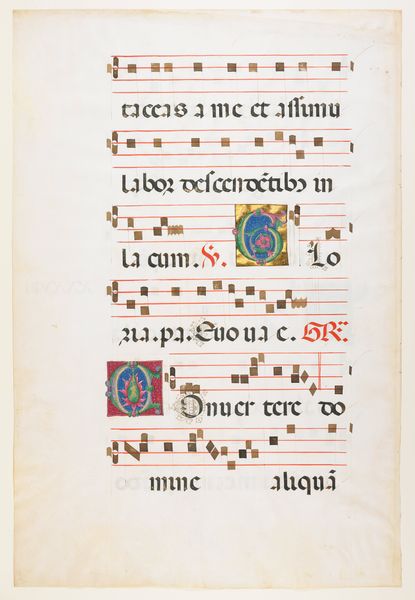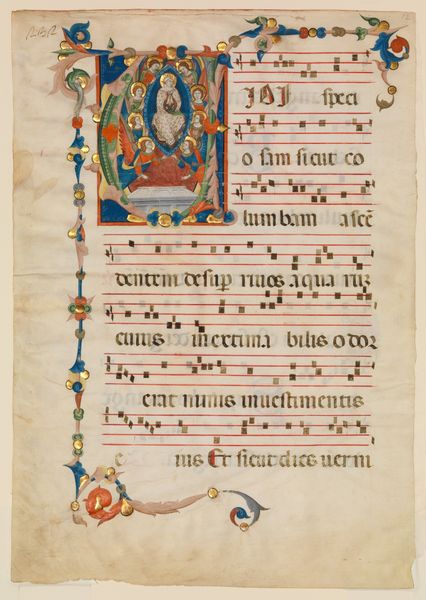
Angel in a Historiated Initial "A" from an Antiphonary 1300 - 1310
0:00
0:00
drawing, print, watercolor
#
drawing
#
medieval
# print
#
figuration
#
watercolor
#
miniature
#
watercolor
Dimensions: 130 × 125 mm (initial); 535 × 385 mm (sheet)
Copyright: Public Domain
Curator: Just look at the way that initial "A" glows. Editor: It does seem almost lit from within. We are looking at "Angel in a Historiated Initial 'A' from an Antiphonary," created circa 1300 to 1310 by Neri da Rimini. This work, housed at The Art Institute of Chicago, offers such an intimate glimpse into medieval artistic and religious practices. Curator: Absolutely, it's fascinating to consider the function of this piece within its original context, an antiphonary, a book of chants used in the liturgy. And an elaborate initial like this one was far more than just decoration. Editor: I am drawn to the almost miniature-like quality; that carefully rendered angel practically leaps off the parchment due to the vivid contrast. I’m captivated by the ultramarine and vermillion of the decorative flourishes. Curator: The vibrant colours do command attention, especially when we consider that this wasn't simply an act of artistic expression, it played a pivotal role in enhancing the experience and communicating the grandeur of the divine. Editor: In truth, this detail might go unnoticed within a bustling choir loft, viewed from a considerable distance; I am struck by the degree of craftsmanship displayed upon the minute scale. Curator: And its placement underscores the social and religious importance of music and text within the medieval Church. To me, it also suggests power: the patronage necessary to create and use such lavish objects in worship. It would underscore the institution's significance and its divine mandate to both those within and beyond. Editor: So true! Each element, from the layout to the very last drop of pigment applied, conveys such clear meaning. Looking at the entire artifact I become lost in thoughts about the methods applied to transfer notation into physical representation on vellum. Curator: Thinking about its journey from a working manuscript to a museum piece, there's a world of transformation and interpretation that the object embodies, from the medieval scriptorium to today’s galleries. Editor: Indeed, encountering art across the boundaries of time allows us to deepen both our historical insights and esthetic sense.
Comments
No comments
Be the first to comment and join the conversation on the ultimate creative platform.
